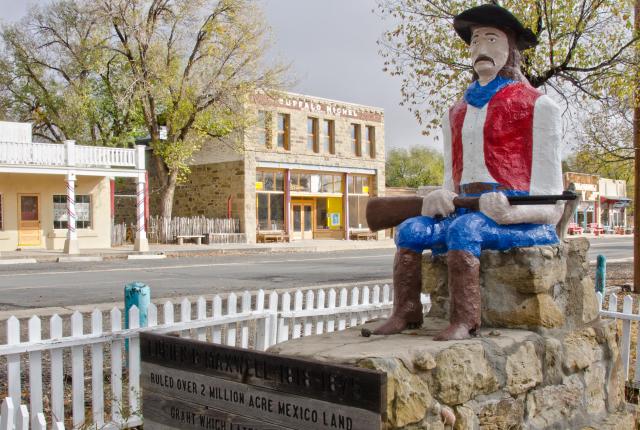A STATUE OF LUCIEN B. MAXWELL—seated, rifle across his legs—keeps watch over the northwest corner of Cimarrón Park. One of the largest contiguous landowners in United States history, Maxwell once possessed more than 1.7 million acres in northeast New Mexico and southern Colorado, including the townsite of Cimarrón. Born in the Illinois Territory, the frontiersman married María de la Luz Beaubien in 1844. Through her large inheritance and other land sales, he accumulated the vast holdings of the Maxwell Land Grant over the next 20 years.
Yet the story of the statue’s creator, Domenico “Professor Dom” Poglianich, might be just as interesting, says Cimarrón historian Gene Hamm. A miner, gold prospector, and Philippine–American War veteran, Poglianich worked odd jobs and lived in a two-story cave in town. “They called him Professor Dom because he had a unique way of analyzing situations,” Hamm says. In the mid-1930s, Poglianich felt Cimarrón needed something to recognize its founder. The brightly painted concrete depiction of Maxwell is actually Poglianich’s second attempt (the first was destroyed by vandals), for which he was paid $5. His other works, now mostly gone, included a battleship made of old barrels and an American flag, displayed on a hillside overlooking Cimarrón, made from pieces of glass. While the village’s Chamber of Commerce coordinates the statue’s maintenance, its upkeep is a community effort, Hamm says. “Different people do it every year if it gets dirty.”
The Lucien B. Maxwell statue can be found off Ninth Street in Cimarrón. Learn more about Domenico “Professor Dom” Poglianich and his artwork at the nearby Aztec Mill Museum, open in the summer.


